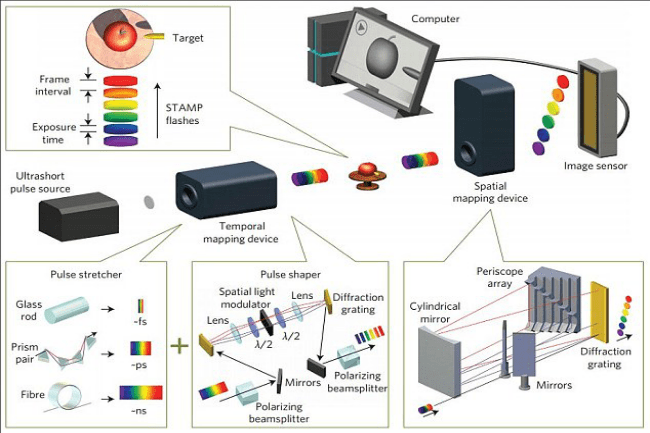
Published in the peer-reviewed Nature Photonics journal, the Sequentially Timed All-optical Mapping Photography (STAMP) camera records at speeds of 4 trillion frames per second, far beyond what most high-speed cameras can come close to recording. The STAMP does it by inventing an entirely new way to capture images. Typically, a high-speed camera sends out light to an object and probes for the light to produce an image. This process is known as repetitive measurement. STAMP skips that step and instead records bursts of images at a time, allowing it to record even faster images that depict more intricate events.
The MIT Media Lab also showcased a camera back in 2011 that can record about 1 trillion frames per second. At that speed, you can actually begin to see the movement of light as it refracts and scatters through an object, such as a plastic bottle. However, STAMP is a massive machine at about 3 square feet (1 square meter) and is not meant for picking up human movement, but instead chemical reactions and processes such as heat conduction. The goal is for STAMP to assist with medical observations and other scientific research. The makers of STAMP also hope to increase the device’s resolution of 450 x 450 pixels (which is a lot for a camera of this type) with some future improvements as well.
This massive, likely very expensive machine is far from a consumer product, but it will hopefully unlock new ways to learn and develop technology that makes our world all the better. It’s also, of course, really cool.


